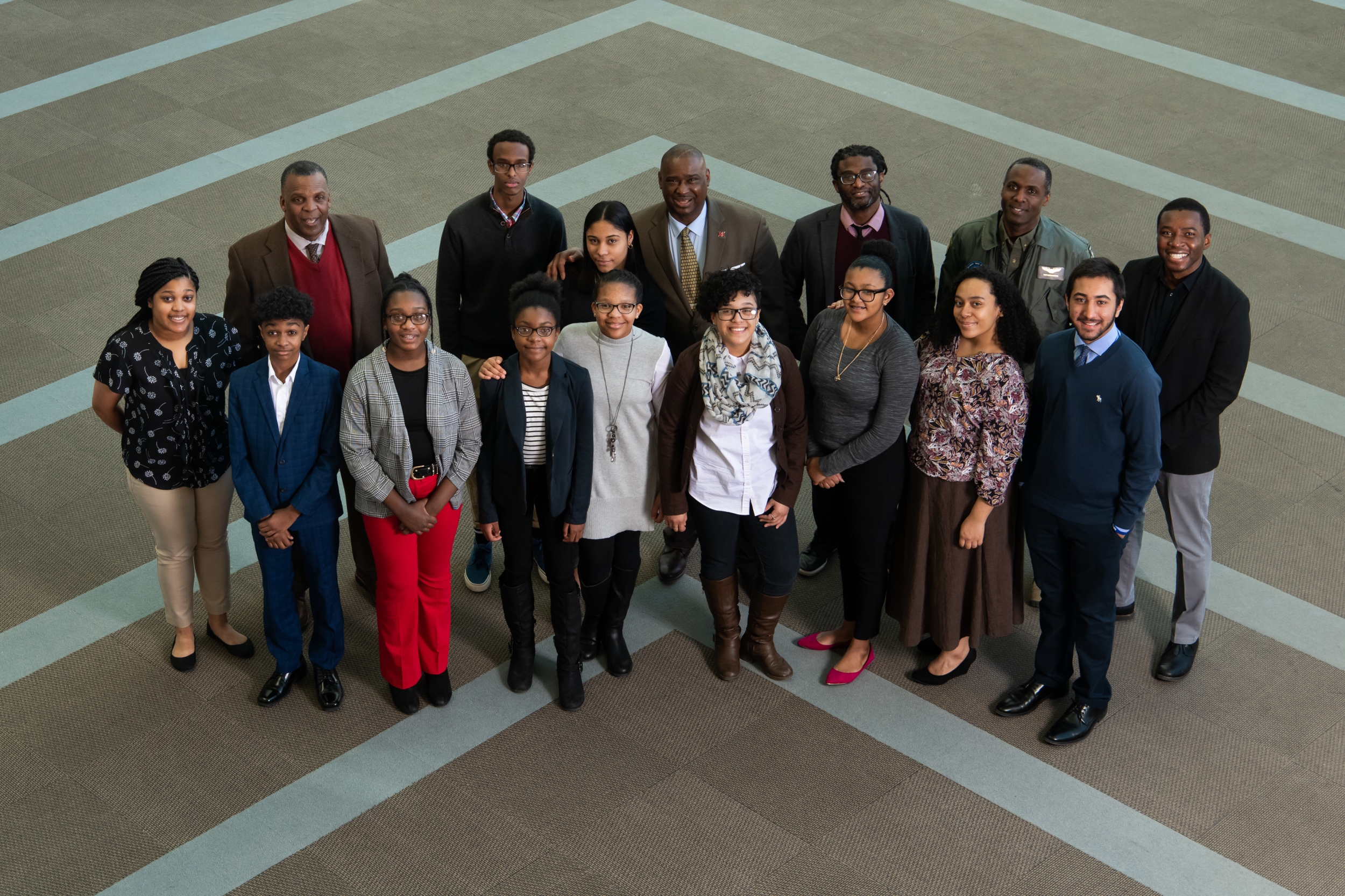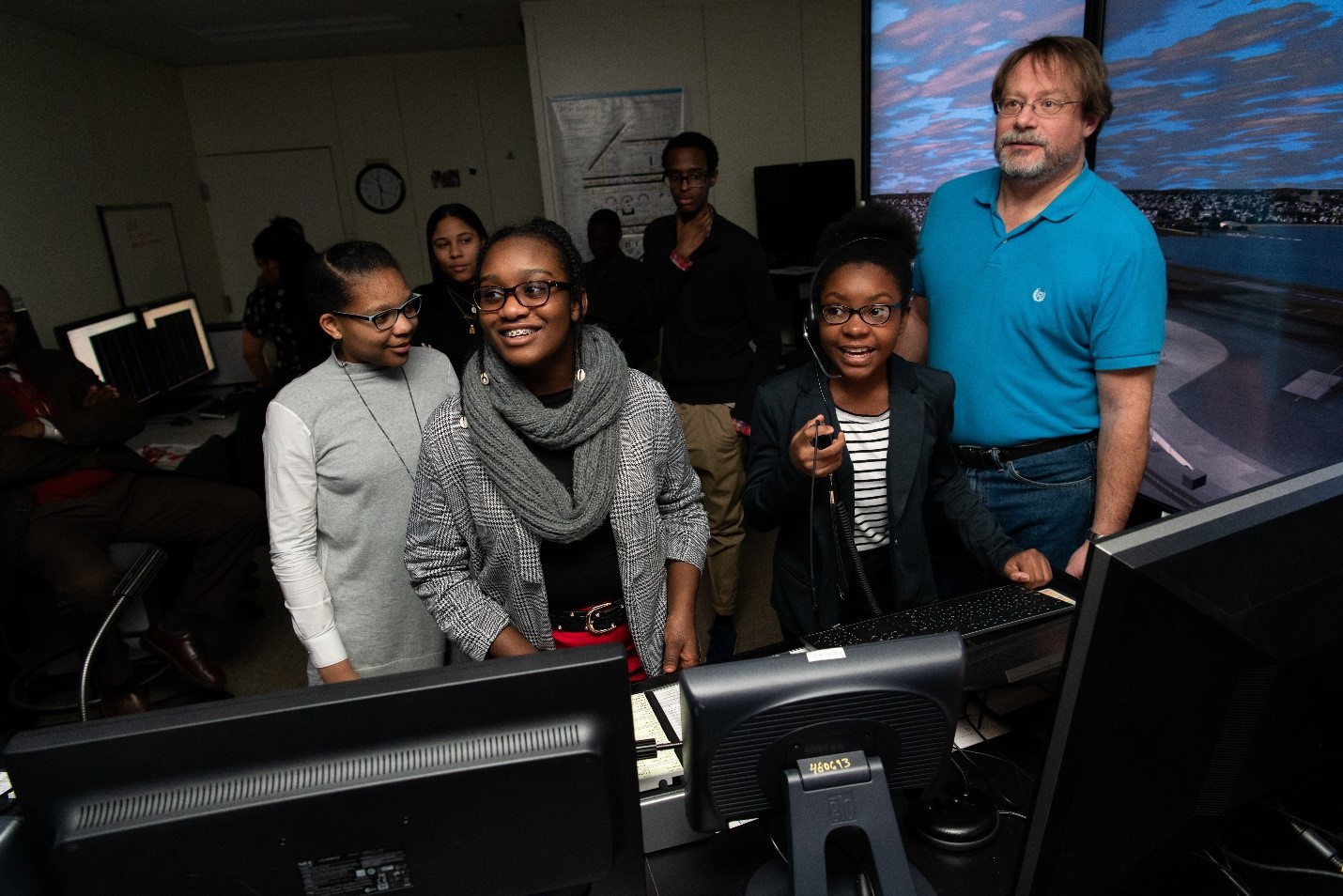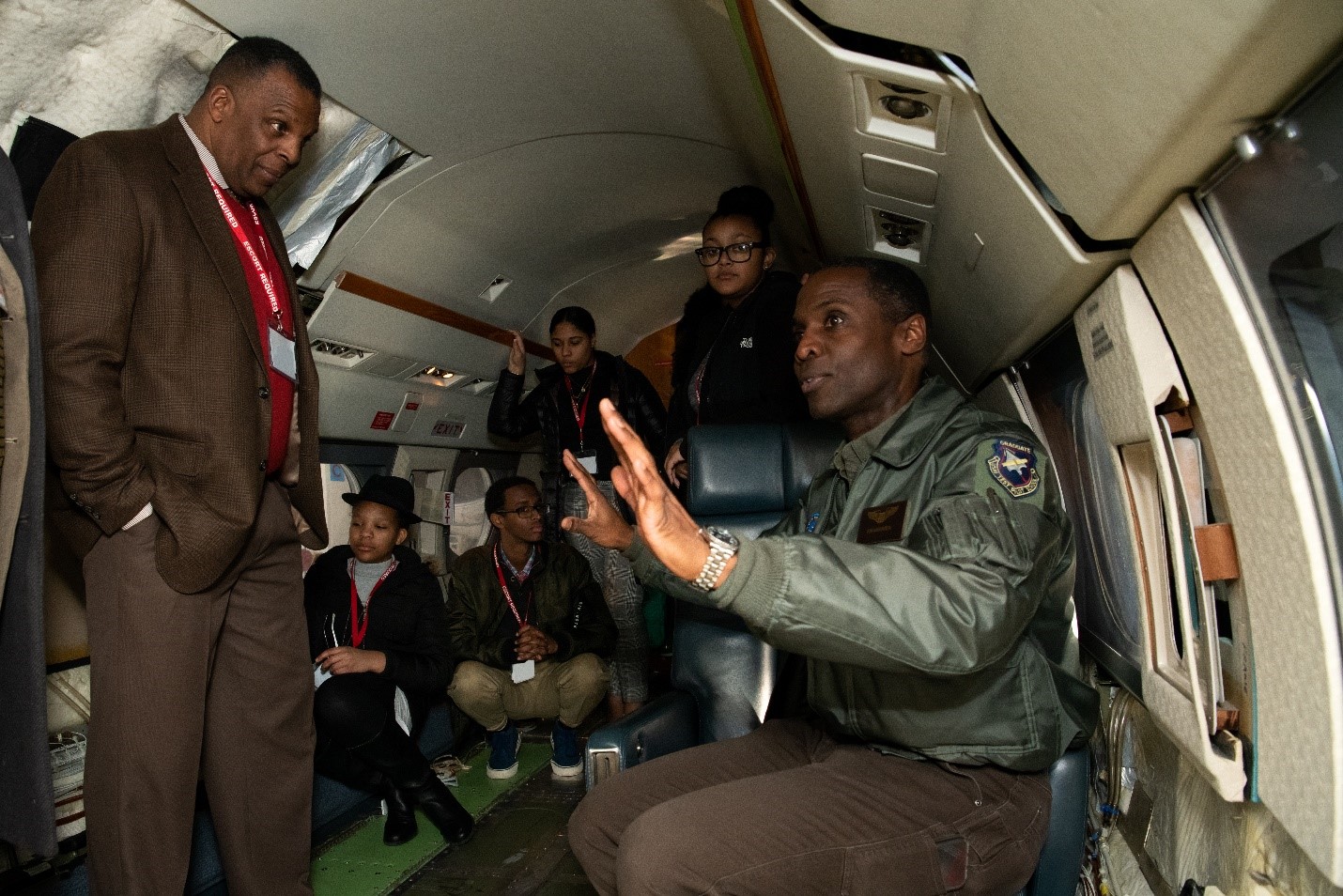Brockton students tour Lincoln Laboratory flight and weather facilities

While most people were hunkering down and preparing for a polar vortex to hit, ten Brockton High School and Ashfield Middle School students spent Wednesday, January 30, learning what that weather would do to the roughly 50,000 flights that move through U.S. airspace every day. The group toured the Lincoln Laboratory Integrated Weather and Air Traffic Test Facility Airport Control Tower Flight Simulator and the Weather Systems Lab, as well as the Flight Test Facility and RF Systems Test Facility on Hanscom Air Force Base. The students were all members of the after-school financial literacy program Empower Yourself, run by Cedric Turner, or Mr. T as he is known to his students. He and principal James Cobbs, both of whom attended the tour, hoped that giving the students an opportunity to see what a laboratory like Lincoln Laboratory does would help to pique their interest in STEM. "The access is the name of the game," Turner said. "This is a life changing experience."
The tour was organized by the Lincoln Employees’ African American Network (LEAN). "Educational tours are very important, as they help provide inspiration for students. This is especially important for students from underrepresented communities, where such extracurricular activities are not common," said Idahosa Osaretin, the chair of LEAN. "We want our young people to dream and have ambitions of being great." Osaretin and Thomas Washington, of LEAN's outreach subcommittee, both attended the tour.

The students split into two groups to tour the Integrated Weather and Air Traffic Test Facility. In the weather systems area of the facility, Lincoln Laboratory staff members Joseph Venuti and Richard Ferris pointed out different types of meteorological data on screens around the room, that depicted weather patterns such as jet streams and the cold front that was due to move in the next day. They explained some of the prototypes that the Laboratory was working on, like a program to synthesize different sources of weather data into one user-friendly tool that could be used to make air traffic control decisions. "We've taken our weather tools and tried to look into the air traffic controllers' world, through their eyes," Venuti explained.
In the air traffic control tower simulation lab, students tried some of the equipment. Twelve wrap-around screens created an immersive view of Boston Logan International Airport runways as seen from the air traffic control tower. While Laboratory staff members Christopher Edwards and Bradley Crowe explained how such an immersive virtual control center could theoretically be used sometime in the future for situations when visibility is limited, the students strapped on headsets and used vocal commands to direct the on-screen planes. They were particularly delighted to learn that the right vocal commands would cause the planes to taxi smoothly and take off, while the wrong command would cause the plane to blow up.

In the afternoon, the students boarded a bus to the RF Systems Test Facility's anechoic chambers on Hanscom Air Force Base. They were escorted through darkened rooms the size of small houses with walls lined entirely with blue foam spikes. Paul Theophelakes, who led the tour of the anechoic chambers, demonstrated how the foam absorbs echoes (hence the name anechoic) and allows the Laboratory to get cleaner results from its tests of radar systems.
On the other side of the building, Washington led the students through the Flight Test Facility, a hangar housing several decommissioned planes that were being stripped and retrofitted with equipment for specific flight tests of new airborne systems. The students boarded a Gulfstream IV that had previously been a Navy transport plane, although the once luxurious wood paneling had almost all been stripped out to make room for a greater amount of sensing equipment.
The students were impressed by the tour, and many felt the physical sciences and meteorology addressed were directly relevant to their educations and prospective careers. "It [physical sciences] is the field I want to go into," Brockton High School senior Jayla said. "I can definitely see myself working here in the future."